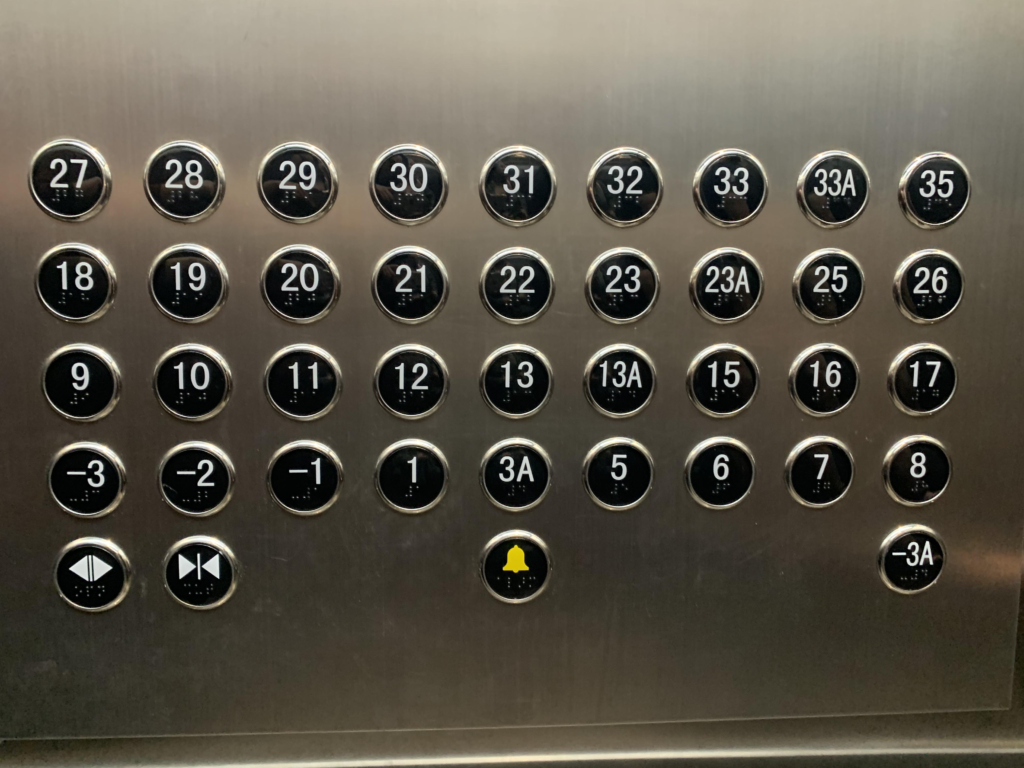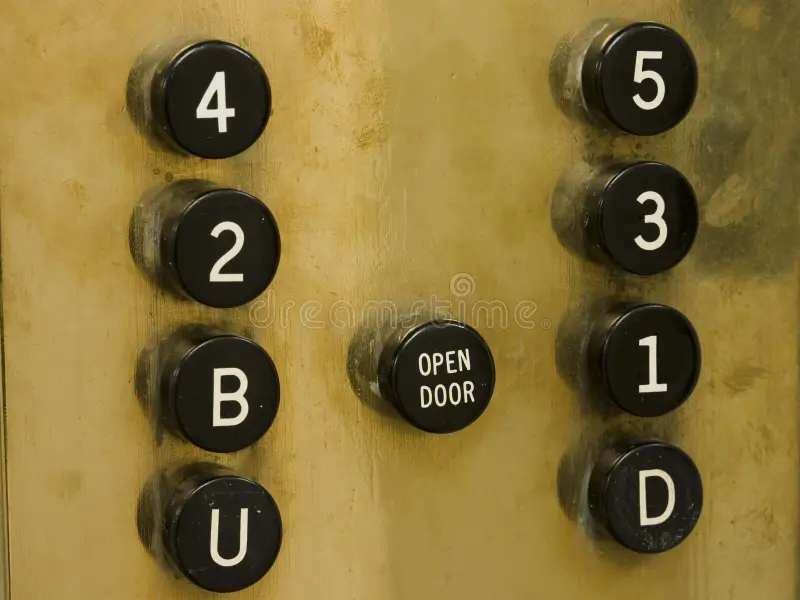Elevator buttons might seem like simple tools we use every day, but they play a crucial role in moving people efficiently and safely between floors. Understanding how these buttons work and why they’re designed the way they are can be both fascinating and practical. In this guide, we’ll explain everything you need to know about elevator buttons in an easy-to-follow way, covering how they function, their design, and why they are essential.
What Are Elevator Buttons?
Elevator buttons are the small, often illuminated controls located inside and outside elevators that allow passengers to operate the elevator. They come in various shapes, sizes, and styles but generally serve the same purpose: enabling users to select their desired floor, open or close doors, and request help in case of emergencies.
Inside the elevator cabin, buttons are typically organized in a panel to represent each floor the elevator can reach, along with additional buttons for other functions. Outside the elevator, you’ll find call buttons that let you summon the elevator to your floor. These buttons are critical for ensuring smooth and safe elevator operation for everyone.
Why Do Elevators Need Buttons?
Imagine an elevator without buttons – it would be impossible to communicate where you want to go or control the doors. Elevator buttons are the main interface between passengers and the elevator system. They allow individuals to make their specific floor selections, adjust door timing, and even signal for assistance in emergencies.
Without buttons, elevators would have to rely on pre-programmed stops or voice commands, which might not be practical in crowded buildings or for people with different accessibility needs. Buttons ensure that elevators are easy to use for everyone, regardless of age or technical expertise.
What Materials Are Used to Make Elevator Buttons?
Elevator buttons are built to withstand frequent use, making their durability a key consideration. They are typically made from strong, long-lasting materials like stainless steel, aluminum, and polycarbonate plastics. These materials are not only resistant to wear and tear but are also easy to clean, which is especially important in public spaces where hygiene is a concern.

Some buttons are also designed with antimicrobial coatings to reduce the spread of germs. In more modern or high-end elevators, you might find touch-sensitive panels or buttons made with glass, adding an element of sophistication to the design. No matter the material, elevator buttons are engineered for both functionality and longevity.
What Do the Symbols on Elevator Buttons Mean?
Symbols on elevator buttons are universal and intuitive, ensuring they are easily understood by people of all ages and backgrounds. For example:
- Up and down arrows: These are the most common symbols, used to call the elevator to your floor. Press the up arrow if you want to go up or the down arrow if you want to go down.
- Floor numbers: Inside the cabin, numbered buttons correspond to each floor the elevator serves.
- Door open and close icons: These buttons are usually represented with arrows pointing away from or toward each other.
- Emergency bell or phone symbol: These buttons connect you to emergency services or building staff in case of a problem.
How Do Elevator Buttons Send Signals?
When you press an elevator button, a signal is sent to the elevator’s control system. Modern elevators use advanced electronic systems to process these signals almost instantly. The button press activates a small switch or sensor, which then communicates with the elevator’s computer. This system decides the most efficient route for the elevator to take, ensuring minimal wait times and maximum efficiency.
In older elevators, mechanical relays were used to send these signals, but today, most systems rely on microprocessors and digital controls. Some advanced elevators even use algorithms to predict traffic patterns in busy buildings and optimize their routes accordingly.
Types of Elevator Buttons You’ll Find Everywhere
Elevator buttons come in various forms, depending on the elevator’s design and purpose:
- Push buttons: The most common type, where pressing the button completes an electrical circuit.
- Touch-sensitive buttons: Found in modern elevators, these buttons respond to the slightest touch and are sleek in appearance.
- Braille-engraved buttons: Designed for accessibility, these buttons include raised dots for visually impaired users.
- Key-operated buttons: Used for restricted areas or maintenance purposes, these buttons require a key to activate.
Floor Selection Buttons Explained
Floor selection buttons are the core feature of any elevator. These buttons allow passengers to choose the specific floor they want to reach. Each button is labeled with a floor number, and pressing it sends a signal to the elevator’s control system, which adds that floor to the elevator’s route.
In some elevators, you’ll notice that pressing a floor button will illuminate it, indicating that your request has been registered. If you accidentally press the wrong button, newer elevators may allow you to cancel your selection by pressing the same button again.
The Door Open and Door Close Buttons
The door open and door close buttons are additional features found in most elevators. These buttons allow passengers to manually control the timing of the elevator doors.
- The door open button is useful if someone is rushing to enter the elevator or if you need extra time to exit with luggage, strollers, or other bulky items.
- The door close button lets passengers speed up the closing process, which can be helpful in busy buildings where every second counts. However, in some elevators, the door close button is not always functional and may only work in emergency or maintenance situations.
Emergency Buttons: What Are They For?
Emergency buttons are an essential safety feature in every elevator. These buttons are typically marked with a bell or phone symbol and are prominently located on the control panel. When pressed, the emergency button connects passengers to building security, maintenance personnel, or emergency services.

Emergency buttons are designed to provide immediate assistance in case the elevator malfunctions, stops unexpectedly, or if someone inside requires urgent help. Some modern elevators also have two-way intercom systems or cameras that allow direct communication with building staff or emergency responders.
Why Are Elevator Buttons Easy to Use?
Elevator buttons are designed with simplicity and ease of use in mind. The layout of the control panel is logical and intuitive, with floor numbers arranged in sequence and additional buttons clearly labeled with symbols. Buttons are also large enough to be pressed easily, even by children or people with limited dexterity.
The tactile feedback of pressing a button, combined with visual indicators like illumination, ensures that passengers know their input has been registered.
Elevator Buttons for Accessibility
Accessibility is a key consideration in elevator button design. In compliance with the Americans with Disabilities Act (ADA), elevator buttons are required to be placed at a height that is easily reachable for wheelchair users. Additionally, the buttons must be labeled with large, easy-to-read text or symbols.
Braille on Elevator Buttons
Braille is a common feature on elevator buttons to assist visually impaired passengers. The raised dots next to each button indicate the corresponding floor or function, ensuring that everyone can use the elevator independently and safely.
Fun Facts About Elevator Buttons You Didn’t Know
Did you know that elevator buttons are among the most frequently touched surfaces in any building? In fact:
- The average elevator button is pressed hundreds of times per day in busy locations like office buildings, shopping malls, and hotels.
- Some elevators in high-tech buildings now use touchless technology, allowing you to select floors by waving your hand or using a smartphone app.
- The door close button myth: In many elevators, the door close button doesn’t actually work – it’s there mainly for psychological comfort!
The Bottom Line
Elevator buttons may seem like small, insignificant parts of a building, but they play a big role in keeping people moving safely and efficiently. From selecting floors to calling for help, these buttons are essential for modern transportation. Their design, materials, and functionality are carefully crafted to ensure accessibility, durability, and ease of use for everyone.
Next time you step into an elevator, take a moment to appreciate the thought and engineering that went into those little buttons!














Leave a Reply